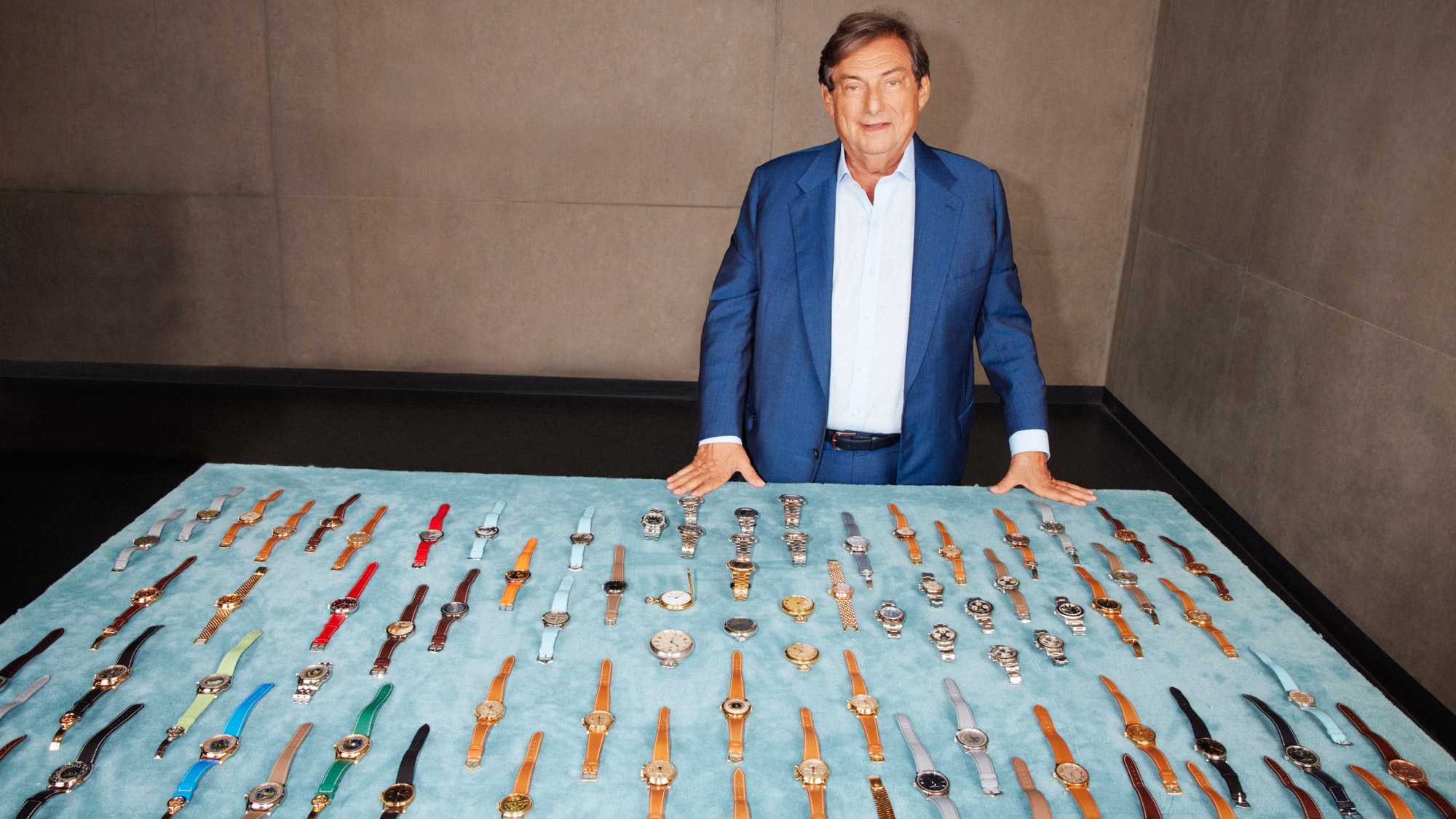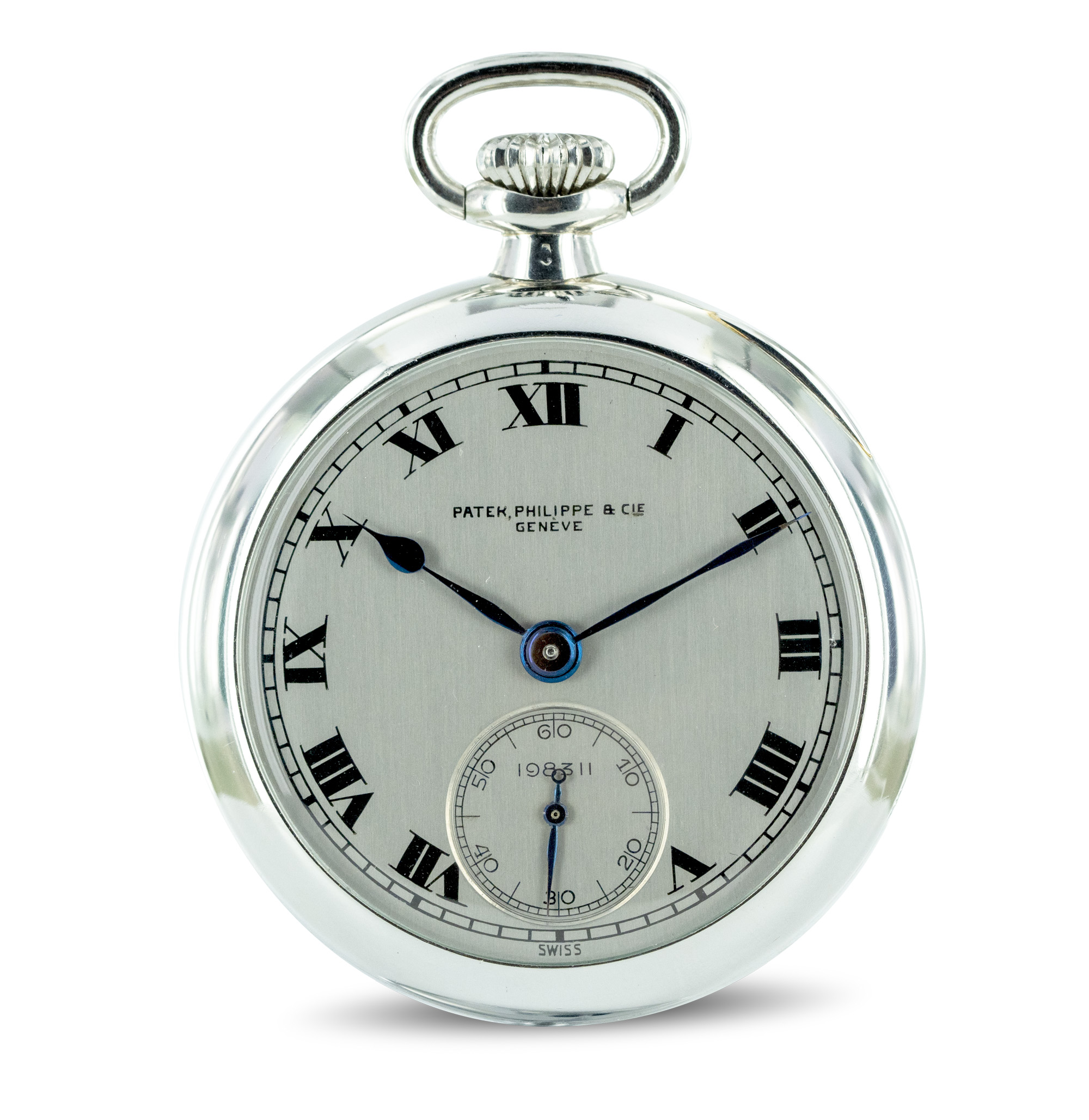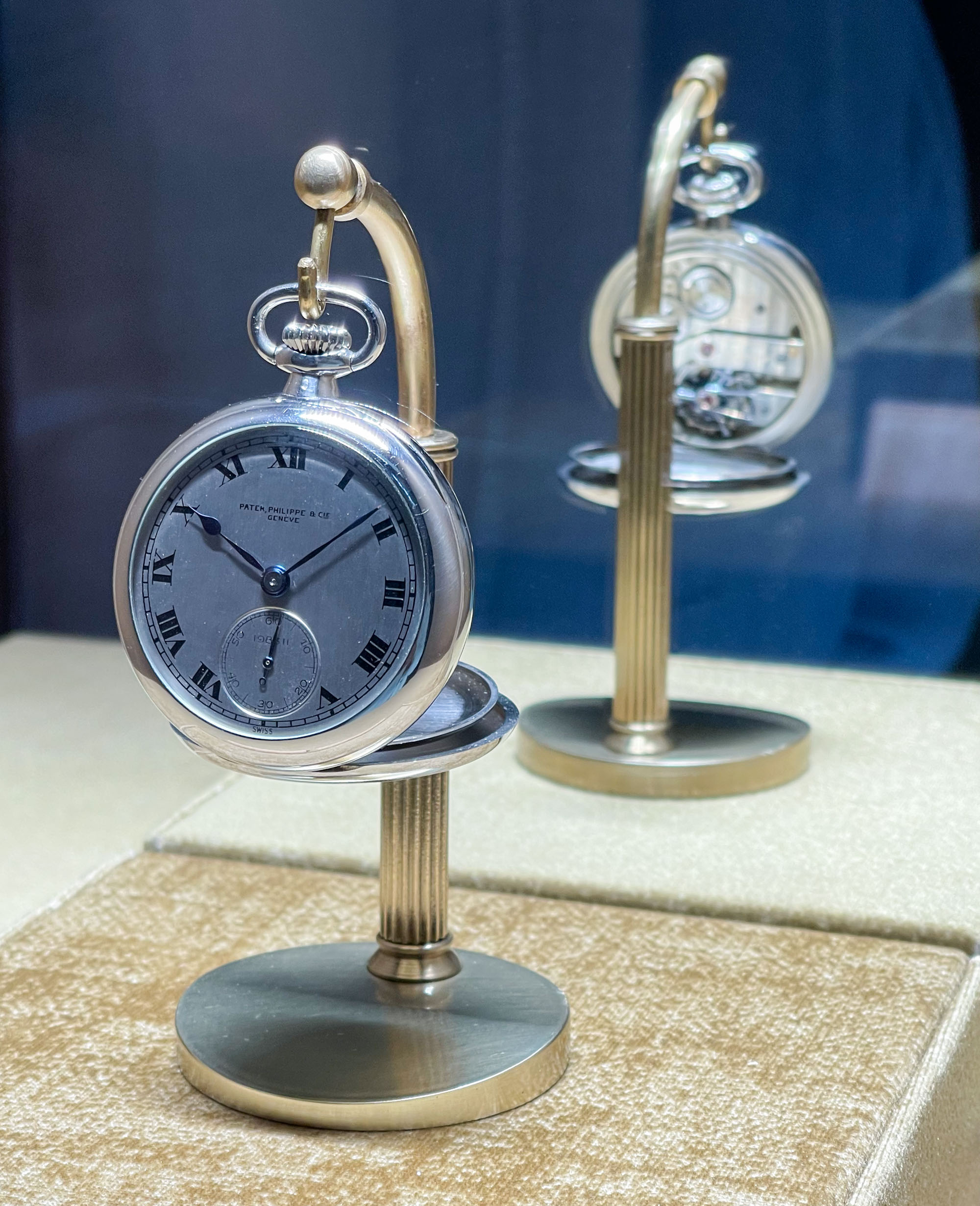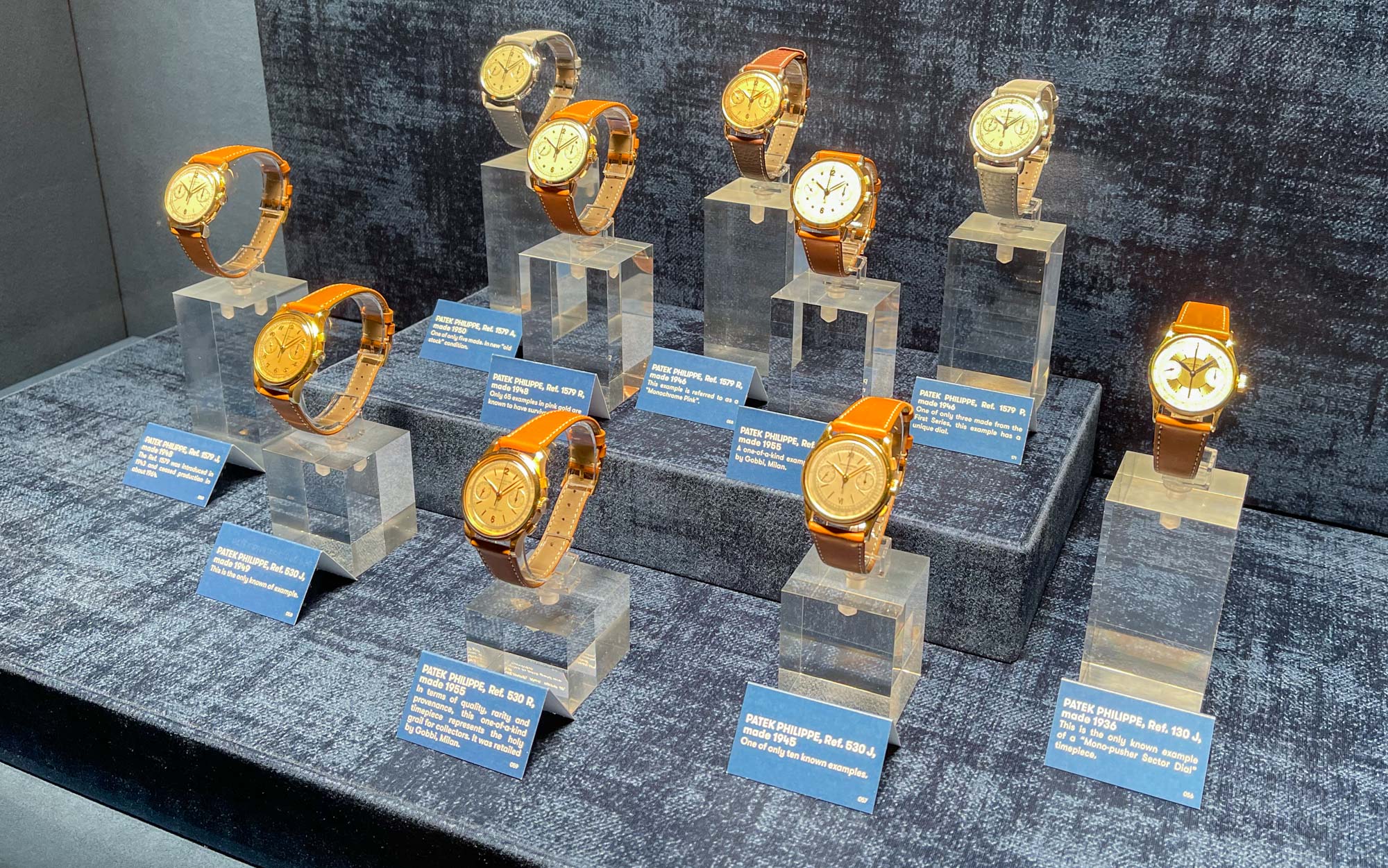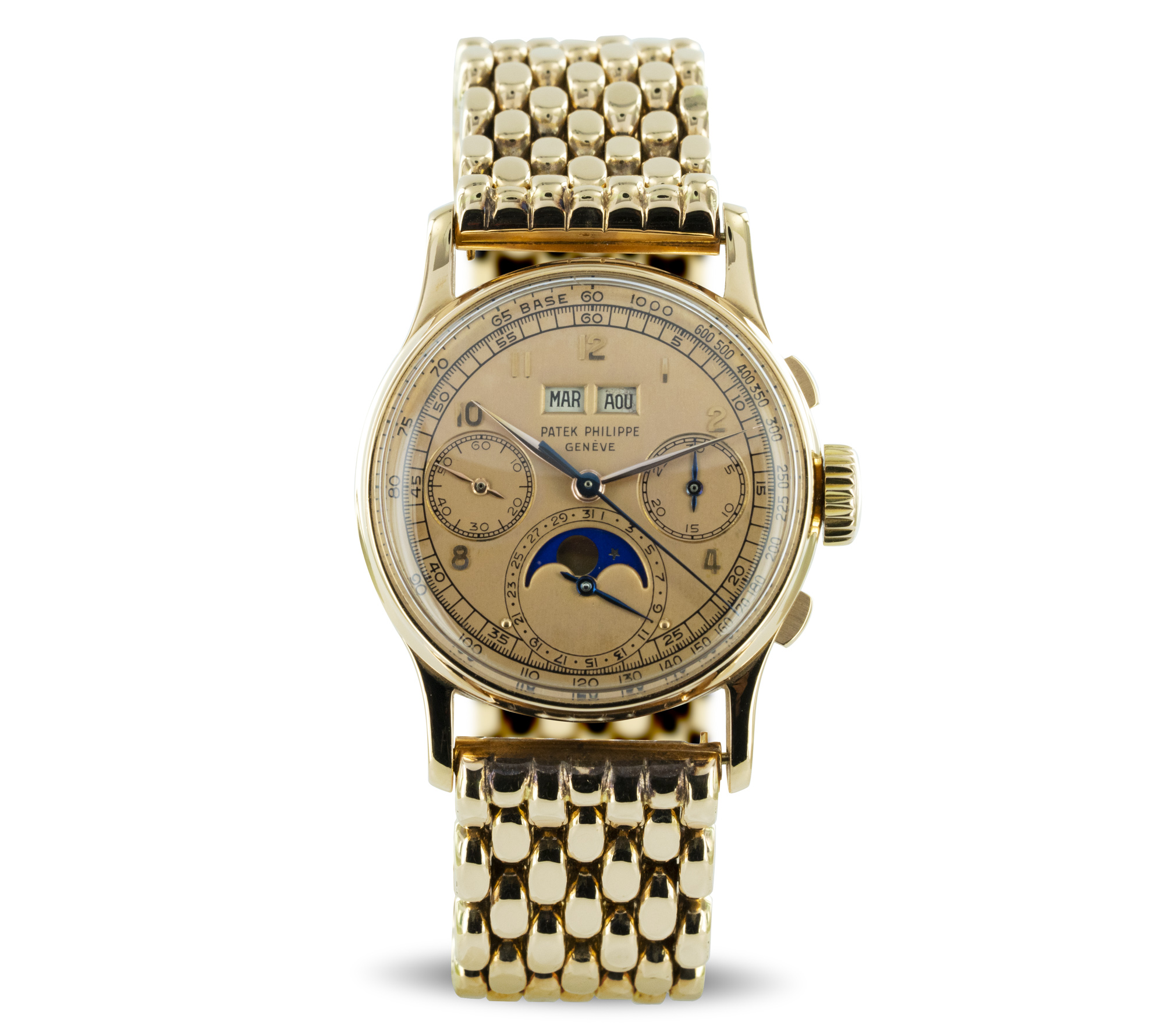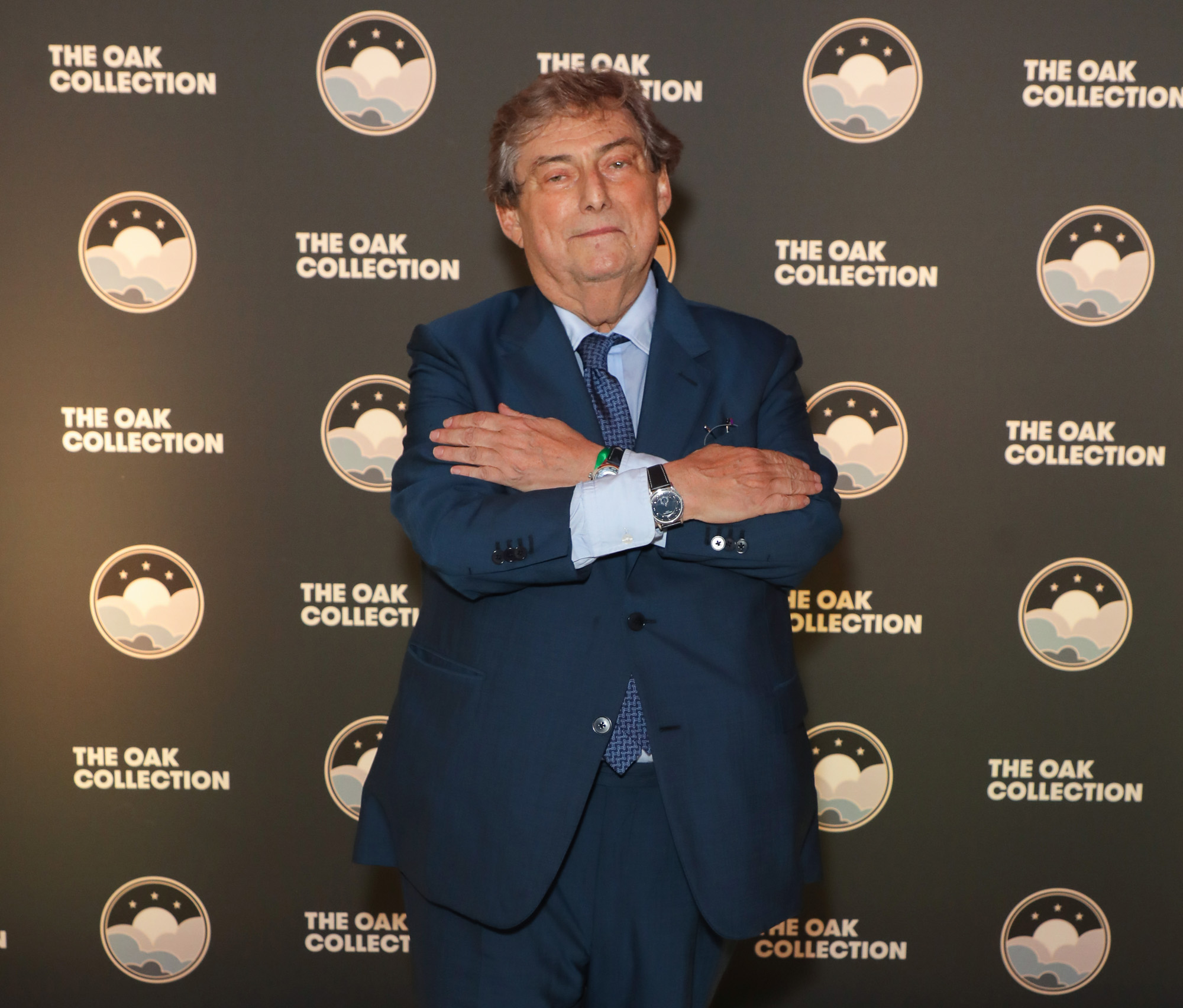
For four decades, Mr. Patrick Getreide collected wristwatches in relative secrecy, even from most of his closest friends. A childhood fascination with mechanical timepieces sprouted into a purchasing obsession when the ambitious collector first started to earn the kind of money needed to acquire his wrist-worn dreams. Every occasion worth celebrating in Getreide’s life earned him a new wristwatch. In fact, his first fine watch purchase (a style of Cartier Tank that was en vogue at the time) was with money he won from betting on a horse race. His collection of pieces (at least what has been disclosed) now spans at least several hundred watches that he has purchased at retail, from auctions, and through a network of trusted confidants who have enabled his acquisitions through a clandestine web of sources. The resulting watch collection was a mostly private hobby until recently. Then, “the collector” decided it was time to debut his passion to the world. The result was the OAK Collection, and it begins its march around the world with a 10-day exhibition at the Design Museum in London in late May, 2022.
The OAK Collection is meant to stand for “one of a kind,” and the idea is that the pieces represented in it are either unique or so exceptionally rare as to have an identity all their own. These watches represent some of the more mainstream, crowd-pleasing items in Mr. Getreide’s collection, not to mention some of the most valuable. His favorite brand, Patek Philippe, is also heavily emphasized in the collection, as are some of the world’s loveliest steel-cased Rolex sports watches and historic complications. In all, the OAK Collection exhibition is a careful selection of 168 watches taken from the larger body of Getreide’s horological assets. It comes complete with an audio tour and a wealth of information about the watches themselves. It’s an absolute delight to see as a member of the watch intelligentsia because these are all considered museum-grade, truly historic timepieces that celebrate the zenith of 20th-century personal mechanical timekeeping, as well as the intent passions of a single, highly-dedicated enthusiast who crawled as deep as probably anyone ever has down the rabbit hole of vintage Patek Philippe collecting. To put things in further perspective, experts who are widely familiar with the matter of today’s major spenders on watches consider Patrick Getreide’s collection to be in the top five or even top three in the world. While calculating a precise dollar value would be tricky, few would disagree that the OAK Collection’s current 168 pieces together would be worth anything less than 300 or 400 million dollars.
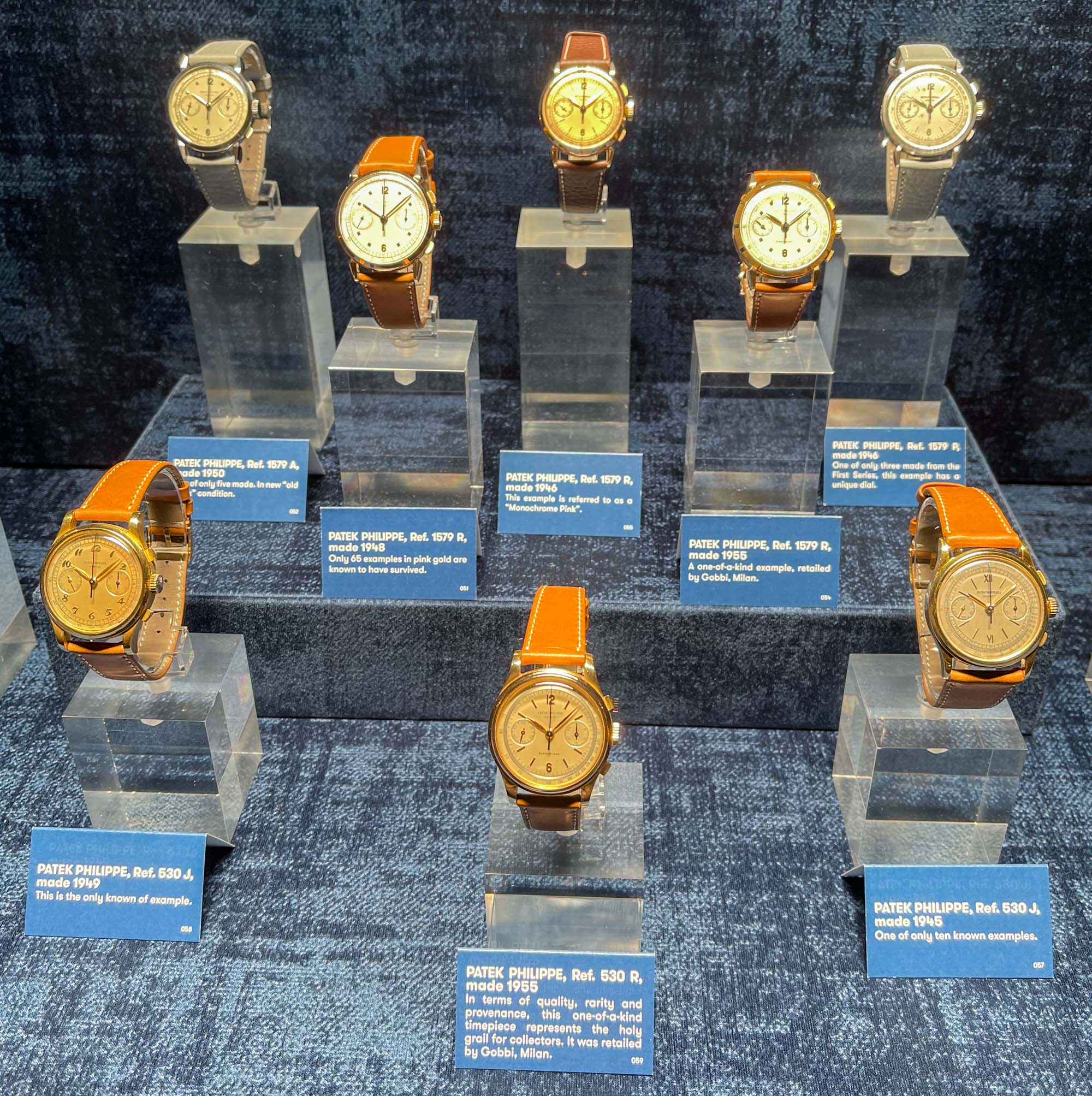

That introduction alone is probably enough to get even the most casual of watch-interested consumers to visit the OAK Collection if the opportunity arose for them. To experience, in public and for free, this assembly of truly remarkable works of mechanical and design art is a rare and awesome thing to behold. It also comes with a lot of questions and curiosity because exhibitions like this haven’t really happened before. Most people who see the OAK Collection might benefit from a bit of a primer on why Patrick Getreide wanted to embark on sharing his collection and what he personally hopes the average visitor will take away from it.
The fashionable question to ask during the opening of the OAK Collection was, “Does he intend to sell many of these watches afterwards for profit?” It is a brash prediction, but my industry colleagues are correct to ask economic questions related to why someone would both invest in creating an exhibition of this nature, and then also fly in a bunch of industry opinion leaders to experience it. A smart business person might use such an opportunity to inflate the popularity of an object they own, only to later sell that item at market for what would probably be a higher price given greater awareness. In theory, this argument might be correct. Dig deeper, however, and you see that, in reality, the likelihood of Mr. Getreide organizing the OAK Collection as a scheme to further inflate the value of the world’s most collectible watches is unlikely. This is because any gains potentially realized in temporary wristwatch value increase would be offset by the cost of the exhibition itself. More so, Patrick Getreide has made it perfectly clear that he has spent fortunes many times over on watches out of passion and as a hobby — not as a vehicle to earn money or store value. The network of collectors like him who have the disposable income to spend yacht money on a single old wristwatch is relatively small (albeit highly competitive). If the purpose of the OAK Collection was to alert more ultra-wealthy timepiece aficionados that such treasures exist, it would be in folly since the majority of the displayed watches are famous enough in said social and collecting circles. So, we return to the important question: What does Patrick Getreide intend to accomplish with his OAK Collection of watches?

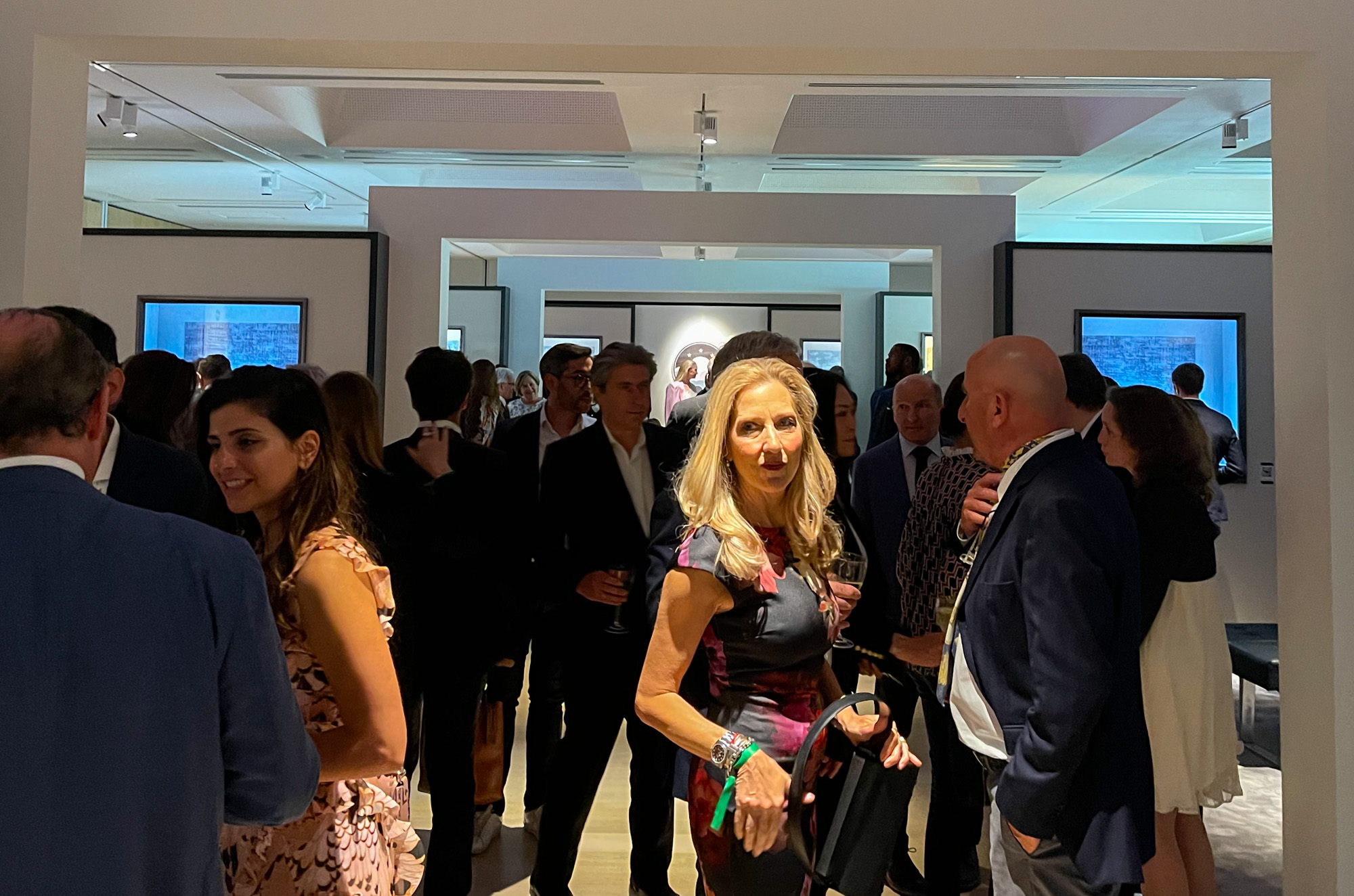
While visiting the OAK Collection, I got to spend time with Patrick Getreide and some of his family. He credits the genesis of making his collecting public to his son, Roland, who adores his father but admittedly doesn’t share the same passion for watches. Getreide is comfortable with this fact and makes it clear he will not lose any sleep thinking that his children might sell his collection after he departs. This is probably because Patrick Getreide knows his watches, and ones like them, should be owned by people who love them and will take care of them. Patrick is quite proud of the fact that he personally wears all of his watches, and he shudders at the thought of a collection like his being locked away in a safe and hidden from view. If his family after him does not share his passion for these priceless wearables, then it is better that they be tendered to someone who does.
And yet there is, perhaps, a third or middle option to this interesting dilemma of what to do with a posthumous wristwatch collection. Why not do with watches what many so far have done with art? Why not admit the collection to a glorious afterlife as a museum exhibit for future generations to learn something from (or to just be wowed by)? There might not be very many people who have the problem of how to convey a priceless object collection after their passing, but it is a very real dilemma for history’s men and women who have had the good fortune, taste, and tenacity to put together something like a collection of hundreds of the world’s most celebrated collectible timepieces. How will future generations perceive the work? Will people appreciate the objects like the original owner will? Will the personality and character of the original collector somehow maintain with the body of watches or will the individual pieces in the collection become more famous than the original curator?


Each of these questions has been asked and answered throughout history as people with authentic legacies to pass on use their capabilities and power to create substance behind their accomplishments. Following the footsteps of many of his likely heroes, Patrick Getreide continues a long tradition of creating academic meaning behind the chaos which is a passionate person’s purchasing behavior.
Getreide seems to particularly relish doing things people tell him cannot be done. The OAK Collection concept is in part a reaction to the fact that no one has done it before. Watch collectors today often groan about the fact that the general public doesn’t always see what they do in beautiful timepieces. The answer of course is to educate the general public so that their “watch culture” is a bit more closely matched to that of a serious connoisseur. Exhibitions like the OAK Collection serve the important purpose of injecting wristwatches into today’s culture, helping a more general audience to participate in the once esoteric talk of timepiece enthusiasm.


What members of the public should not receive as a take-away message from the OAK Collection is what watches to purchase themselves or where the boundaries of good taste begin and end. If you saw the larger assortment of all the watches owned by Patrick Getreide, they would simply represent the frenetic consumption of one specific character. Each of us has a different character with different tastes and experiences in life that we want watches to help us remember. Getreide is very vocal about the fact that his watches represent his own taste and character. The curated selection of watches that make up the OAK Collection is just one attempt to create structure and some organization to what is a truly prolific set of watches. He just happens to like (and be able to afford) watches so remarkable that they have set records or are particularly important to the last 100 years of mechanical watch history. Anyone inspired to collect watches after viewing the OAK Collection is advised to follow their own hearts and taste. Not to mention the fact that pretty much everything displayed in the OAK Collection is otherwise impossible to get.
What advice does Getreide have for other collectors? As the OAK Collection is not a rubric for how to collect but rather an incredible example of one man’s journey as a well-funded watch hobbyist, what is there to learn for those seeking to build up a collection of their own? When Mr. Getreide purchases a serious watch (probably much like he purchases anything else serious) he evaluates three criteria in this particular order; quality, rarity, and provenance.


To be even considered as something to purchase a watch or item must have a requisite level of quality and standing. The veteran collector cannot be bothered with anything that isn’t on par with the high standards an accomplished aficionado no doubt naturally develops. Quality is both a subjective and objective standard depending on how you look at it. The key is that each person sets standards for themselves as to what qualities they value in a watch. Mr. Getreide would say that you should first get to know and identify the qualities you personally value most in appreciating watches, and then after that apply the discipline to stay in your lane and only pursue the watches with the qualities you are searching for. Doing so is also a good way to narrow down your choices.
Inevitably, the world presents you with many items of high quality when you start to know what to look for. The seasoned collector knows that even the largest budget is not sufficient to purchase everything they like that is of high quality. Thus, the second criterion of rarity is then applied to help further reduce those items which a collector considers for acquisition. High-quality, rare items are compelling because collectors rarely need to fear that someone else in the room might also have one. Being able to assert an increased sense of individuality is among the more important values expressed by the most accomplished collectors. Rarity, and ideally absolute uniqueness, is incredibly valued for Getreide and collectors like him because it allows them to feel a more complete sense of ownership of a theme.


Unfortunately, there are still so many high-quality, rare items in the world that these two criteria alone are not enough to help refine nuanced acquisitions to a collection of timepieces. The third criterion is the most important and least tangible, something Getreide calls “provenance.” The implication is that the origin of a watch has a large impact on its value. This is often manifested by investigating who produced a watch or who owned it. In reality, the concept of provenance is simply a measure of the subjective emotional value of the story behind a watch. This value can come from who produced it, why it was produced, what it was made of, how it was designed, who owned it, what they did while wearing it, or how culture has interpreted the popularity of an aesthetic. The value of provenance, just like taste, is inherently personal. It can be interesting to learn what stories appeal to someone else, while at the same moment identifying that those stories mean nothing to us personally.
That said, provenance is the driving before behind why people collect. The people who collect watches almost always assign specific, personal meaning to each individual watch. Memories, ideas, people, experiences, and hopes can be injected into a physical object — a practice commonly done with wristwatches. Getreide, like many other watch collectors, really just wants more people to be excited about watches like he is. If there were one simple reason why the OAK Collection exists, it is because one very determined man decided that more people would get pleasure out of getting to know his hobby a little bit better. There is no better way to do it than merely showing everyone what personally gets you so very excited. This exact vein of logic and emotion is what inspired me to create aBlogtoWatch, and it is a common thread amongst watch lovers that in their own way they seek to evangelize the hobby.
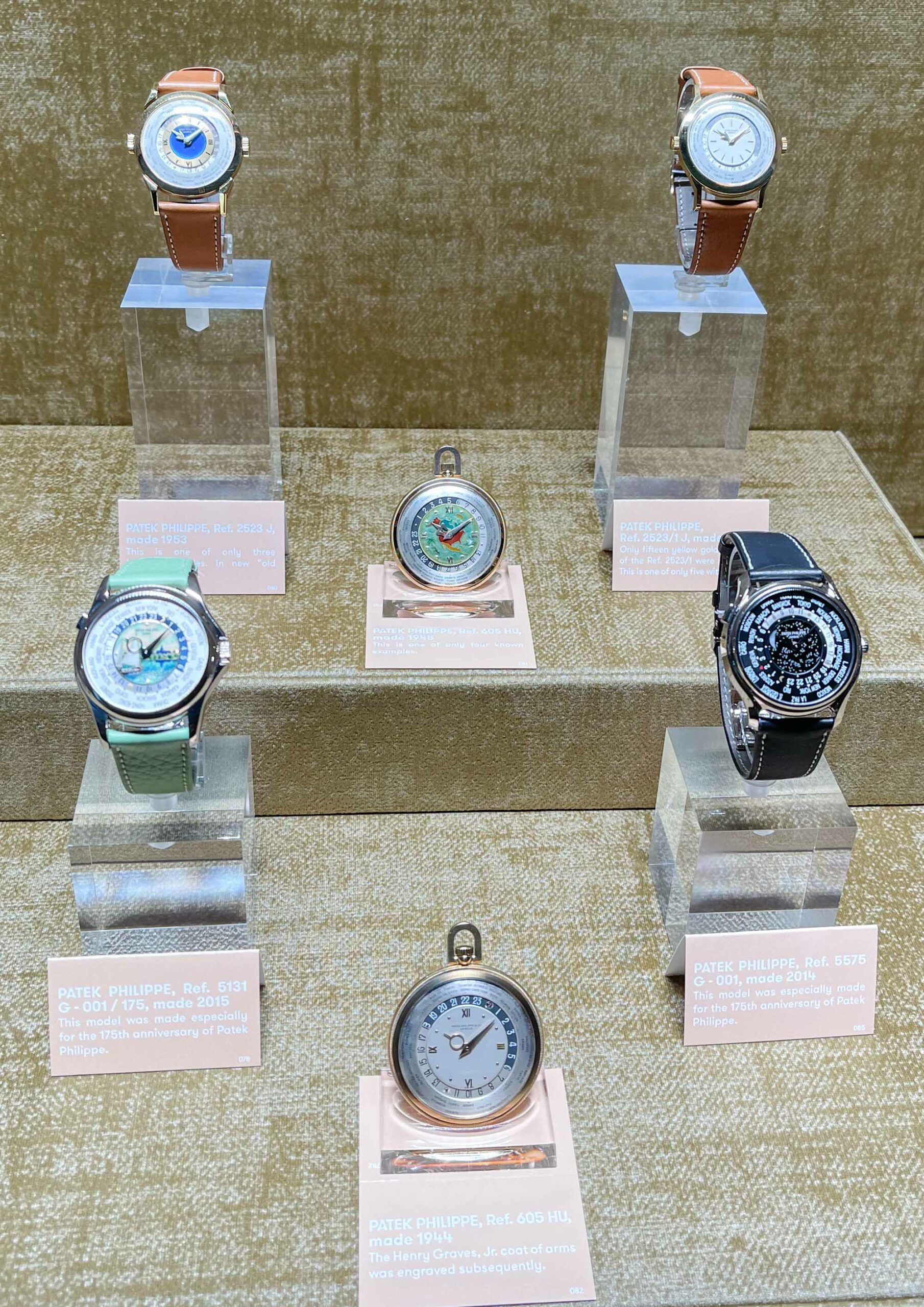
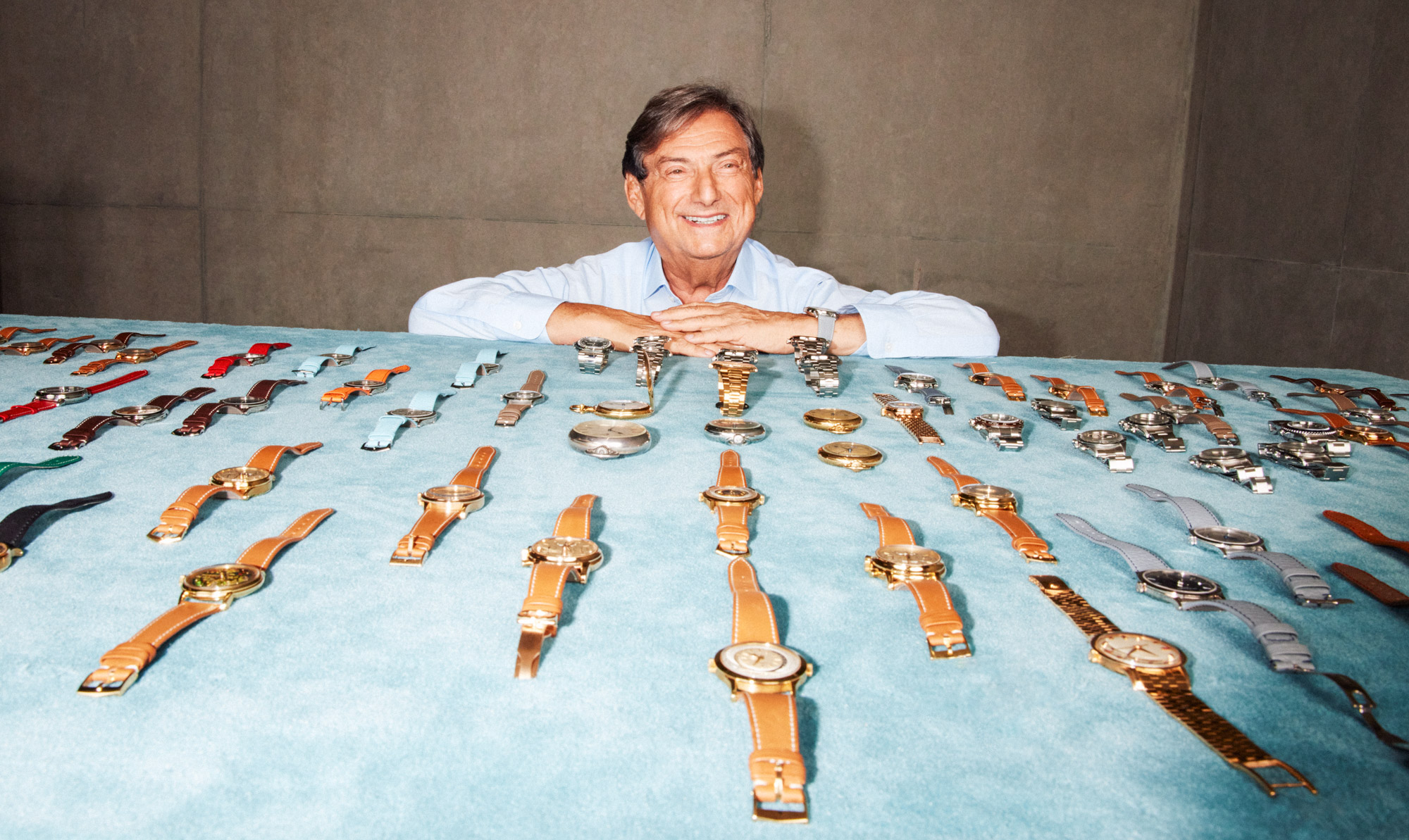
From an academic standpoint, the OAK Collection represents some of the most important timepieces from the last 100 years. Studying them and their nuances is a surefire way to kickstart a serious education in the watch collecting hobby. For this reason alone, Getreide’s watches belong in a museum for people to admire and study. To the watch industry, the OAK Collection is a blessing. Patek Philippe and Rolex alone are the beneficiaries of truly priceless good will. It begs the question whether we are soon embarking on a new era in the watch industry where major trends and events are shaped not by corporate interests but by mega collectors.
I encourage you to read the reports by my colleagues that go into more detail about some of the more specific watches in the OAK Collection. I wanted to discuss the nature of the exhibition, the special man behind it, and what the entire exercise in passion should mean to the overall watch industry. The intention for the OAK Collection is that it travel from location to location. Next on the agenda is New York City. If the OAK Collection of watches comes to a place near you, then please try to experience this truly unparalleled opportunity to see watches that aren’t just famous for their value, but truly emblematic of beauty in their respective space. The companion to reading this article is my SUPERLATIVE Podcast interview with Patrick Getreide who was very generous with his time. That episode should come out in a few weeks. Let us know what you think about the OAK Collection or any particular watches display in it via the comments below. Learn more at The Oak Collection website here.

